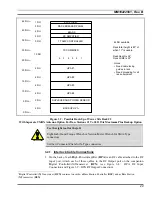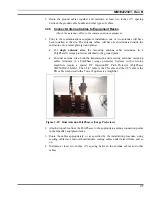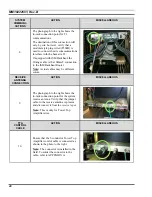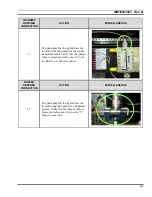
MM102225V1, Rev. B
34
4.2 OVERVIEW OF OPENSKY BASE SITE EQUIPMENT
An OpenSky base station consists of a variety of products and includes radio transmitting
and receiving equipment, RF distribution equipment and network communications
system interface equipment.
OpenSky is a digital system and has some significant differences in terms of fixed
network connectivity to that commonly seen with conventional analog systems. In
particular, base station controllers (BSCs) communicate via an access server and are
connected back to a central office or dispatch center via digital circuits.
OpenSky base station equipment is available in five primary RF configurations. This
document covers Types 1, 2, 3, and 4 listed below. Type 5 is covered separately.
1. Primary site with separate transmit and receive antennas: Referred to as a Tower Top
Site.
2. Primary site with a single antenna for transmit and receive: Referred to as a Duplexed
Site.
3. Outdoor Enclosure with separate transmit and receive antenna.
4. Outdoor Enclosure with a single antenna for transmit and receive.
5. Low profile site providing coverage fill: Referred to as a Cell Site.
4.3 TEST
METHODOLOGY
Equipment configuration and testing must be performed in accordance with the
instruction given in this document. Tests must also be conducted in the order given in this
document as adjustments made during certain procedures may affect the results of other
tests.
Testing an installed base site comprises performing standard forward and reverse channel
tests to ensure correct operation of the entire installation. Testing also verifies physical
and application layer connectivity to the Regional Operations Center serving the site
under test via a communications link.
Required specifications are verified using one of the following methods:
1.
Inspection:
An observation or examination of an item against the applicable
documentation to confirm compliance with the requirements.
2.
Analysis:
Interpretation, interpolation, or extrapolation of analytical or empirical data
under defined conditions of reasoning to show theoretical compliance with stated
requirements.
3.
Demonstration:
Verification of an operational or functional capability by one or
more performances before qualified witnesses, as designated by the customer.
Instrumentation or data recording beyond that provided indigenously by the elements
to be verified shall generally not be required.
4.
Objective Test:
Performance of a functional operation under specific conditions
involving the use of instrumentation, special test software, and/or special test
equipment to generate, acquire, and/or record data. This method may include an
analysis of test data.
Содержание P5100 Series
Страница 2: ...Installation Manual MM102225V1 Rev B Jul 05 Base Station Tower Site ...
Страница 70: ...MM102225V1 Rev B 69 This page intentionally left blank ...
Страница 72: ...MM102225V1 Rev B 71 This page intentionally left blank ...
Страница 74: ...MM102225V1 Rev B 73 This page intentionally left blank ...
Страница 76: ...MM102225V1 Rev B 75 This page intentionally left blank ...
Страница 82: ...MM102225V1 Rev B 81 PARAMETER VALUE EXPLANATION password cisco login end buck40sas ...
Страница 92: ...MM102225V1 Rev B 91 This page intentionally left blank ...
Страница 94: ...MM102225V1 Rev B 93 This page intentionally left blank ...
Страница 96: ...MM102225V1 Rev B 95 This page intentionally left blank ...
Страница 99: ...MM102225V1 Rev B 98 This page intentionally left blank ...
















































